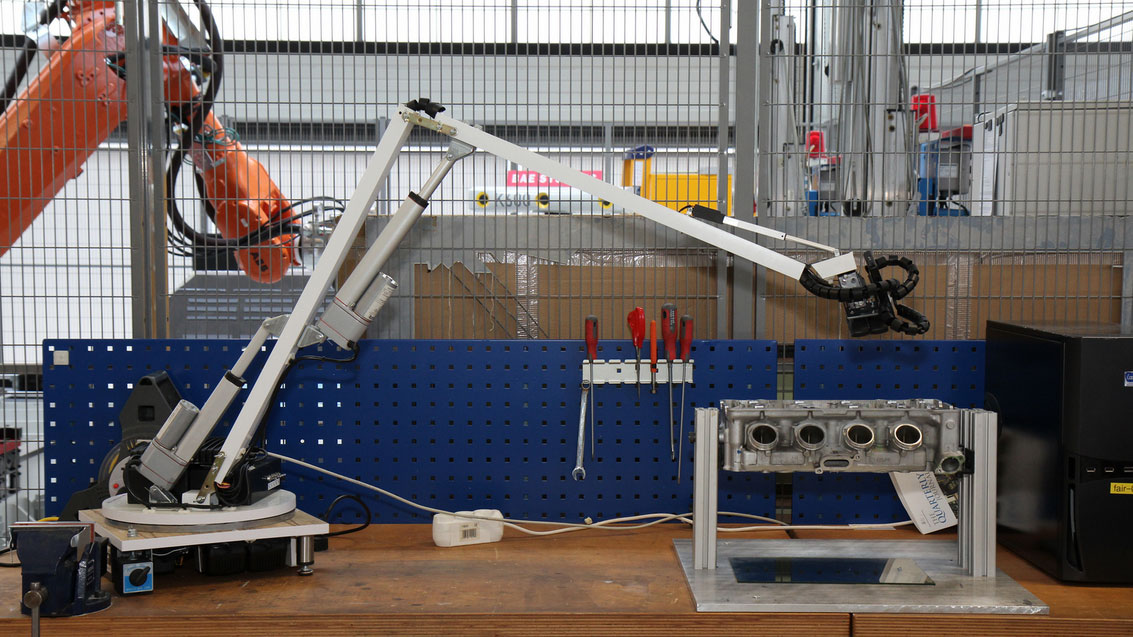Augmented reality robots and remote experts can change our world, says IBM
New project showcases everyday tech solving real-world problems

Augmented reality, smartphones, GPS, video cameras and robotics could provide an answer to the age old problem of having the right expertise in the right place by making geography irrelevant - and a collaboration between tech giant IBM and a UK research centre is aiming to prove that it won't cost the Earth.
Using 'off-the shelf' technology, IBM hopes to make experts in everything from banking to medicine or mechanics can be at your fingertips, no matter where you are in the world.
A collaboration between IBM's UK research and design lab near Winchester, its counterpart in Haifa, Israel and the Advanced Manufacturing Research Centre at the University of Sheffield is aiming to show how anyone can take advantage.
They are showing off a mobile maintenance, repair and operations (MRO) prototype system that allows them to not only tap into the knowledge of experts in different locations, but also locate the right equipment and provide real-time visual support.
Off-the-shelf
TechRadar asked AMRC's Dr Rab Scott - who heads up virtual reality and modelling and Richard Lanyon-Hogg, IBM's technical director for the industrial sector if this showed how there was plenty of innovation possible with commonplace tech.
"Absolutely," said Lanyon-Hogg. "Rab and I were very keen on showing how you can do things with off-the-shelf technology.
"GPS is not a new technology, QR codes are not new technology but you can bring these things together in an innovative way to overcome a set of challenges."
Get daily insight, inspiration and deals in your inbox
Sign up for breaking news, reviews, opinion, top tech deals, and more.
"The solution we've developed avoids the need for one-on-one time with as expert," added Scott.
"Because it's at the end of a network connection it can be one to many... Engineers out in the field running maintenance and coming across problems can dial up expert.
"One of the principle drivers is the time it saves in not having to fly or ship an expert to each problem and a lot of the cost impact that has on the environment."
MRO details
But how does the prototype actualy work?
Well, it allows a supervisor to monitor where an engineer is through GPS and when he is on site allow the use of smartphones and QR codes to identify parts and supply maintenance instructions through an augmented reality overlay.
If it's a whopper of a problem then the supervisor can use a robot arm mounted video camera and projector to help out with advice and diagrams in real-time.
Patrick Goss is the ex-Editor in Chief of TechRadar. Patrick was a passionate and experienced journalist, and he has been lucky enough to work on some of the finest online properties on the planet, building audiences everywhere and establishing himself at the forefront of digital content. After a long stint as the boss at TechRadar, Patrick has now moved on to a role with Apple, where he is the Managing Editor for the App Store in the UK.
